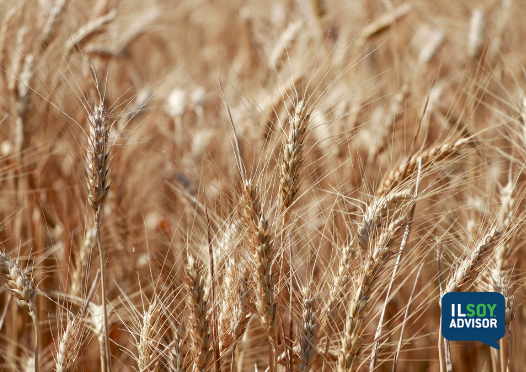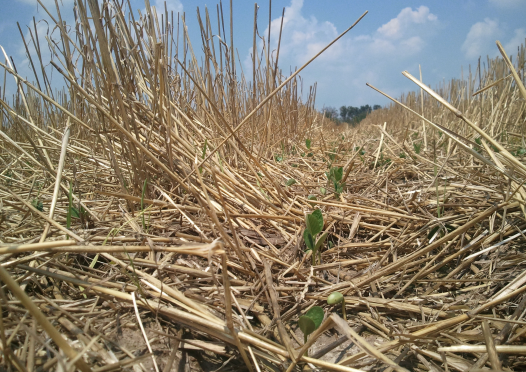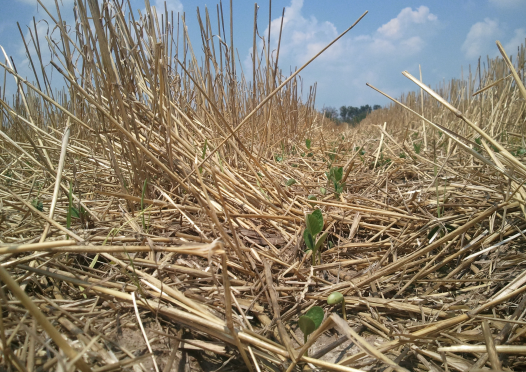ILSOYADVISOR POST
Agronomy: Harsh Conditions for Planting Double Crop Soybeans
While the early spring and long hot dry spell in June allowed wheat to mature early and harvest to occur about 5-7 days earlier than normal, field conditions at the time of harvest and afterward were quite variable for planting double crop soybeans. There were many instances of fields that were very dry and hard with little or no moisture in them, to fields that had some moisture down 2 inches and deeper. Some found moisture only in the “flat” areas of the field and nowhere else.
Other issues also may have contributed to difficult planting. Most of the early harvested wheat still had green straw. This straw was moist and very difficult to cut with the coulters and planter units. In many cases the planter units would ride up over the straw. Add to this some lodged wheat and you have a nightmare scenario being set up that your planter can’t accommodate.
In many instances farmers ratcheted up the down pressure to get the row units in the ground and help cut the straw. Compounding the problems were ruts left behind from fungicide and nitrogen applications earlier in the spring when fields were at or near field capacity on moisture. Some of these ruts were quite deep and asking a planter to jump those ruts at maximum down pressure was risking a lot.
To say we had extreme variability was an understatement. It was not uncommon to hear comments like “I am planting 2 inches deep in places and barely covering them in others.”
Planting into such variable conditions has been successful, only because the first days of July have been very wet with rain, and moist soil at emergence can compensate. The result was those beans planted into moisture emerged and grew while those beans that were shallow sat in dry soil and waited for moisture to germinate. The results, however, are fields with varying sizes of beans, from those at second and third trifoliate to those just-emerged. The picture above shows one such scenario. The beans at either end of this row have been up for about three weeks where the beans in between only emerged in the last 7 days.
Questions have been asked about how this will affect yield. The answer is not much. It may make for some uneven looking fields but it should not have a detrimental effect on yield since soybeans compensate their growth patterns and expand into voids. The biggest issue going forward with the current crop will be weed control. As we get further into July with all this rain waterhemp is exploding while our chemical options for controlling it evaporate.
Kelly is serving as the Illinois Soybean Association Double-Crop Specialist. He was raised on the family farm in Benton, Illinois and graduated from Southern Illinois University (SIU)-Carbondale with a BS in Agriculture Education and Mechanization, and a Master’s of Science (MS) in Plant and Soil Science. Kelly has spent 25 years as a soil fertility agronomist and precision agriculture consultant in southern Illinois while also spending 4 years as a Farm/Agronomy Manager and GIS Coordinator for a large farm in southeastern Illinois. He is a Certified Professional Agronomist and a Certified Crop Advisor.





Comments
Add new comment